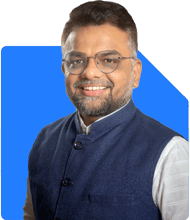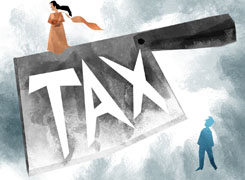Vivek Shah | Answer |Ask -Follow
Financial Planner - Answered on Feb 06, 2023
Shah founded Finrise, a financial planning and wealth management firm, in 2011. He believes that equity investment is the only way to generate long term wealth.
He has an MBA in finance, a degree in chartered accountancy and is a registered life planner from Kinder Institute of Life Planning, USA.... more

How new tax regime annouced in budget will benefit sr. Citizen?
Under the Senior Citizen Savings Scheme (SCSS), the maximum limit ranges from Rs.30 lakh to Rs.15 lakh. The scheme provides 8% interest per annum which will be paid on a quarterly basis.
Under Post Office Monthly Income Scheme (POMIS), the investment limit has been increased by Rs.9 lakh. Earlier, it was Rs.4.5 lakh. In case of joint accounts, the investment limit has been increased to Rs.15 lakh from Rs.9 lakh. The investors can earn interest of 7.1% per annum.
The revised new tax regime has introduced a standard deduction of Rs 50,000 for pensioners as well including family pensioners. Thus, a senior citizen pensioner may benefit under the revised new tax regime if they are unable to claim maximum deductions and exemptions for income tax outgo to remain the same in both tax regimes.
Senior citizen having gross income of Rs 7.5 lakh will have no tax liability in both the tax regime. This will happen if he/she is able to claim the maximum deductions and exemptions (including a standard deduction of Rs 50,000) of Rs 2.5 lakh in the old tax regime. By claiming deductions, the net taxable income will come down to Rs 5 lakh. This will make him/her eligible for a rebate of Rs 12,500 under section 87A in the old tax regime.
On the other hand, if the same pensioner opts for a new tax regime, then he/she can claim the standard deduction of Rs 50,000. This will bring down the net taxable income to Rs 7 lakh. This will make him/her eligible for a rebate under section 87A in the revised new tax regime.
If the pensioner has a gross income of Rs 10 lakh and is able to claim deductions exceeding Rs 3 lakh (such as section 80C, 80D, 80TTB etc., and a standard deduction of Rs 50,000), then the old income tax regime maybe beneficial for them.
In case of gross income of Rs 15 lakh, a pensioner is required to claim deductions of more than Rs 3,50,000 for continuing with the old tax regime in FY 2023-24.
So one can take either old or new tax regime depending on the above factors. I hope this was useful to you.
You may like to see similar questions and answers below
Sanjeev Govila | Answer |Ask -Follow
Financial Planner - Answered on Feb 03, 2023
Mahesh Padmanabhan | Answer |Ask -Follow
Tax Expert - Answered on Feb 22, 2023
Mahesh Padmanabhan | Answer |Ask -Follow
Tax Expert - Answered on Feb 02, 2023
Mihir Tanna |1090 Answers |Ask -Follow
Tax Expert - Answered on Feb 04, 2023
Mihir Tanna |1090 Answers |Ask -Follow
Tax Expert - Answered on Feb 13, 2025
Samraat Jadhav |2514 Answers |Ask -Follow
Stock Market Expert - Answered on Dec 18, 2025
Reetika Sharma |432 Answers |Ask -Follow
Financial Planner, MF and Insurance Expert - Answered on Dec 18, 2025
Reetika Sharma |432 Answers |Ask -Follow
Financial Planner, MF and Insurance Expert - Answered on Dec 18, 2025
Reetika Sharma |432 Answers |Ask -Follow
Financial Planner, MF and Insurance Expert - Answered on Dec 18, 2025
Samraat Jadhav |2514 Answers |Ask -Follow
Stock Market Expert - Answered on Dec 18, 2025

Kanchan Rai |648 Answers |Ask -Follow
Relationships Expert, Mind Coach - Answered on Dec 18, 2025
Kanchan Rai |648 Answers |Ask -Follow
Relationships Expert, Mind Coach - Answered on Dec 18, 2025
Anu Krishna |1754 Answers |Ask -Follow
Relationships Expert, Mind Coach - Answered on Dec 18, 2025
Anu Krishna |1754 Answers |Ask -Follow
Relationships Expert, Mind Coach - Answered on Dec 18, 2025
Anu Krishna |1754 Answers |Ask -Follow
Relationships Expert, Mind Coach - Answered on Dec 18, 2025


























